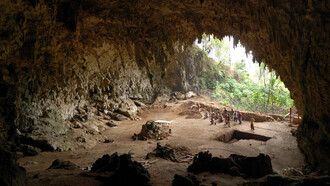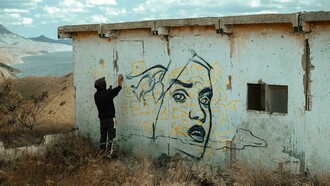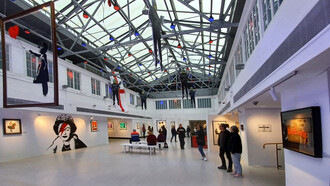The whole of Japan is a pure invention. There is no such country, there are no such people… the Japanese people are… simply a mode of style, an exquisite fancy of art.
One of the enrapturing marvels about bubbling Tokyo is its constantly changing cityscape scenery. The Marunouchi district, in particular, located between Tokyo Station and the Imperial Palace, has evolved tremendously since its political territory of twenty-four estates owned by daimyo feudal lords during the Edo period. Around 1590, Marunouchi was an inlet of the Edo Bay. When an outer moat was constructed after the expansion of the Edo Castle, the land that encircled the inner and outer moats took the name of “maru-no-uchi”, meaning “within the circle.”
The Meiji government, in fact, deemed it rather difficult to make vital use of what they called a “wasteland”. However, in 1890, the prominent Baron Yanosuke Iwasaki, second president of Mitsubishi Corporation, decided to purchase most of the infertile “marshland”. He envisioned to convert the “Mitsubishigahara” (Mitsubishi wasteland) into a London-like business and commercial district. True enough, by 1894, red brick buildings started to line up the streets, carrying the nickname “Iccho London” (London district). Eventually, Mitsubishi Estate Co., Ltd. filled the approximately 120-hectare property with over 110 buildings, and rendered the financial district the new name, “Iccho New York” from 1923.
For over 130 years, Marunouchi continues to flourish with the compelling modernism of towering glass and steel skyscrapers. At the same time, without neglecting its proximity to nature and history wreathed around the symbolic Imperial Palace, the dynamic urban development scheme has landscaped the avenues and moat with tall, verdant trees. It has also erected museums, galleries, and event halls around the vicinity for the promotion of culture and the arts.
Just a stone away from the palace is the charming Marunouchi Nakadori Street, beautifully lined with canopies of robust trees, rows of wooden benches, boutiques, trendy cafés and restaurants. Since 1972, Mitsubishi Estate Co., Ltd. and the Sculpture Forest Arts and Cultural Foundation (responsible for the famous Hakone Open-air Museum) had embarked on an inspirational project to install contemporary sculptures by renowned and promising artists along the picturesque street, referred to as the Marunouchi Street Gallery. Art installations can also be spotted around the nearby Tokyo Station, Yurakucho Station, Marunouchi Station, Nijubashimae Station, and Otemachi Station. The imaginative vision hopes to highlight Marunouchi not only as a thriving financial district but also as a futuristic city of the arts. From noon to 3:00 p.m. on weekdays, and noon to 5:00 p.m. on weekends, the cobblestoned Nakadori Street, also called the “Urban Terrace,” is closed to traffic, hence, creating a haven for leisure and relaxation amidst an outdoor museum during and after a hectic working day.
Currently, there are thirteen sculptures in various media that decorate the sidewalks. They are replaced periodically to introduce a wide array of creations. One of the most viewed artworks is I am a Pumpkin by the celebrated artist Yayoi Kusama. Kusama’s fascination with pumpkins is interpreted in the form of eternity through the use of solid black granite material. The holes inside the structure seem to peep through the natural streetscape. Sedia del Vento (Chair of the Wind) by Kyoji Nagatani is a soaring black bronze chair in slender lines and gold accents. Having studied at The Accademia di Belle Arti di Brera in Italy, Nagatani encapsulated Japanese tradition in the formal artistic nature of Italian modern sculpture. The natural effect of sound and light is emitted by the gold object at the tip of the chair.
SPIRAL.UQ by Osamu Kido is a twisted helix in polished stainless steel that forms intricate spheres from various angles. One feels the vibrating energy of the sculpture as reflections of the surrounding buildings and trees glitter on the shimmering surface. Kido was awarded the 3rd Henry Moore Grand Prize Excellence Award in 1983. Takuro Kuwata’s glazed porcelain work, Horsetail TSUKUSHINBOU, strikes as a pop impression of bright blue and gold, but also utilizes the traditional drip technique of plum flower skin. The shape derives from the shoot of the field horsetail plant. Animal sculptures in painted bronze—Bird 2014-03B, Animal 2016-01B, and Animal 2017-01-B2 all by Atsuhiko Misawa, add tinges of natural life to the street scenery. The expressions of the lion, bear, and white bird may emulate either fear, excitement, or surprise. Walking further towards the 19th century reconstructed Mitsubishi Ichigokan Museum building, one finds exquisite sculptures tucked in the Brick Square garden, a delightful spot adorned with roses, a pond and stone landscaping. The panorama wonderfully complements the outdoor cafés enclosing the green space.
It is almost unimaginable to picture the Marunouchi district as a barren piece of land hundreds of years ago. Tokyo’s rapid city transformations testify the rhythmical movement of the society and the culture, which swing from tradition to modernity or reverse, while history, nature, and art always remain close at hand.















